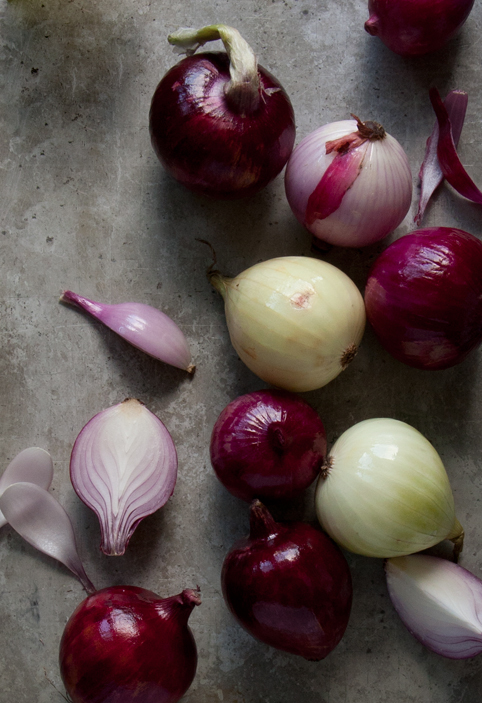The potato. The simple and dearly beloved potato. It can be fried, baked, boiled, mashed, pureed. It can be added to soups and stews, it can be made into dough and shaped as pasta or bread, it can be added to pizza, sandwiches or salads, but most importantly, it can be enjoyed on its own.
When you think about it, you can’t really mess up cooking potatoes (unless you leave them raw or burn them badly). They are quite forgiving when it comes to cooking.
I have to admit that I am a crazy potato eater. I love, love potatoes and I can hardly get tired of them. And, more often than not, I have to restrict myself from eating them regularly. I have my potato phases when I will eat cream of potato soup or potatoes in salad for 2 weeks (yikes!!!). That is why it shouldn’t be a surprise that my mission for several years was to perfect pan fried potatoes. It seems like an easy task; just throw sliced potatoes into a hot pan with some oil, but very often they will come out soggy or slightly uncooked. The texture I was always looking for was a crunchy and crispy skin on the outside and creamy and soft flesh on the inside.
The technique you will find below does exactly that. The desired texture is achieved by boiling whole small potatoes, smashing them with the flat side of a knife while still warm, and pan frying them in a very hot pan until golden and crispy. By boiling the potatoes they get cooked and their moisture is retained. Smashing the potatoes exposes their soft flesh and creates little nooks and crannies that become crunchy edges during the frying process. The final touch of tossing the hot potatoes with smoked paprika and finely grated fresh Parmesan creates a crispy and very flavorful skin and adds just the perfect amount of seasoning.
I can proudly declare that these potatoes are super-duper awesomly delicious. In fact, I was so happy how they turned out that if you look reaaaaaally close into some of the pictures you can see my little anxious fingers trying to snatch some of them.
Enjoy!
Pan Roasted Fingerling Potatoes
Ingredients:
Serves 4
• 1 lb fingerling or small baby potatoes
• 1 tsp salt
• 2 large shallots or 1/2 onion, finely chopped
• 3 garlic cloves, minced
• 7 tbsp olive oil*
• 4 eggs
• 1.5 tsp smoked paprika
• 1/4 cup finely grated Parmesan cheese, plus extra for serving
Directions:
Wash the potatoes, place them in a medium pot and cover them with cold water. Add salt and heat the pot over medium-high heat until it starts boiling. Lower the heat and simmer for 20-25 minutes or until soft (to check, pierce one potato with the tip of a knife and if there is no resistance, the potatoes are ready).
Drain the potatoes and let them cool for 10-15 minutes.
Meanwhile heat a cast iron skillet** over medium-high heat, add 1 tbsp of olive oil and sauté the shallots and garlic until soft and translucent (about 2 minutes). Transfer the mixture into a small bowl and set aside. Wipe clean the skillet by using a paper towel and keep for using later.
Place one potato on a cutting board and using the flat side of a large knife (or a kitchen towel) and the palm of your hand, gently press to flatten the potato to about 1/2 inch thickness. Repeat with the remaining potatoes. Don’t worry if some potatoes break apart, you can still use them.
Heat the empty (this is important) cast iron skillet over medium-high heat for about 5 minutes or until you see light smoke coming from the surface. Add 2 tbsp of oil into the pan and add a single layer of potatoes (about 1/3). Slightly lower the heat if necessary (if the pan is smoking), and fry until the edges become golden brown (about 3 minutes). Flip the potatoes and fry them for additional 2 minutes.
Place the potatoes into a medium mixing bowl by using a slotted spoon.
Repeat with the remaining potatoes.
While the last batch of potatoes is cooking, poach the eggs using the technique described in this post.
With the heat off and while the pan is still hot, return the potatoes and the shallots mixture into the pan. Add the smoked paprika and the Parmesan cheese. Toss until the potatoes are evenly coated and mixed with all the ingredients. Add black pepper and salt if needed.
Distribute the potatoes into 4 plates. Add a poached egg on top of each potato plate and sprinkle with extra grated Parmesan cheese.
*Olive oil is not recommended for high-heat frying. I use it in spite of this because I like its taste. If you prefer, use canola, sunflower or grape seed oil instead.
**Using a heavy (or cast iron) skillet is important because it will retain the heat for a long time, reducing the frying time and ensuring nicely browned potatoes.












